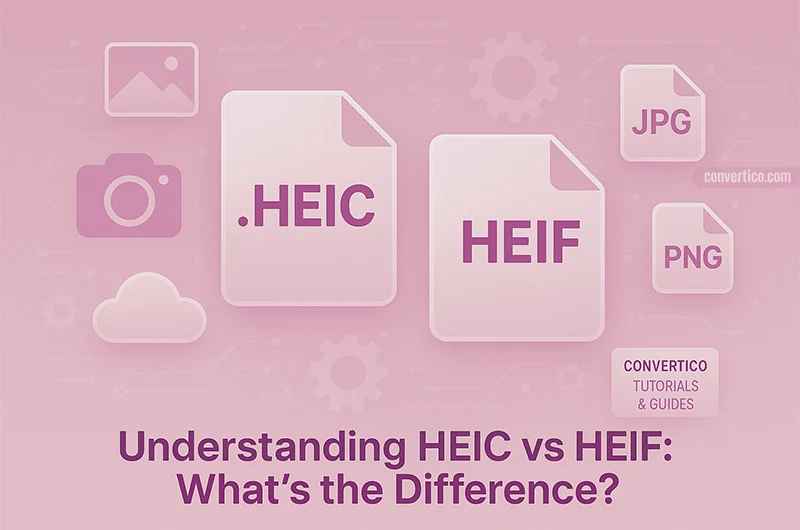HEIF: The Standard Format
HEIF (High Efficiency Image File Format) represents a significant advancement in digital image technology. Developed by the Moving Picture Experts Group (MPEG), it serves as a comprehensive container format with broad capabilities.
HEIF files typically use the .heif file extension, though you might occasionally see .heic for certain implementations.
Key characteristics of HEIF include:
- A container format that can store images, image sequences, and related metadata
- Support for various codecs, not limited to just one compression method
- Ability to store multiple images or image sequences in a single file
- Support for both lossy and lossless compression
Think of HEIF as a versatile box that can hold various types of image data, organized in different ways, with different compression techniques.
HEIC: Apple's Implementation
HEIC (High Efficiency Image Container) is essentially Apple's specific implementation of the HEIF standard. When Apple introduced iOS 11 in 2017, they made HEIC the default format for photos taken on newer iOS devices.

Distinguishing features of HEIC include:
- Uses the .heic file extension
- Specifically employs HEVC (H.265) compression
- Optimized for Apple's ecosystem
- Can store computational photography data like Live Photos
Apple's Implementation Choice
Apple chose HEIC as their implementation of HEIF because it leverages HEVC (High Efficiency Video Coding), which was already integrated into their hardware for video processing. This allowed them to use existing hardware acceleration for processing photos, making HEIC a natural fit for their ecosystem.
Key Differences Between HEIF and HEIC
While often used interchangeably, HEIF and HEIC have important distinctions that are worth understanding:


To clarify the relationship:
- Relationship: HEIC is essentially a type of HEIF that specifically uses HEVC compression
- Adoption: HEIC is more commonly encountered due to Apple's widespread use
- Functionality: HEIC files can contain multiple images (like Live Photos), a feature enabled by the broader HEIF container format
- Software support: HEIC has better support on Apple devices, while generic HEIF may be better supported on some non-Apple platforms
In simple terms, you can think of HEIF as the format specification and HEIC as Apple's specific implementation of that specification.
Advantages Over Traditional Formats
Both HEIF and HEIC offer significant advantages over older image formats like JPEG, which explains their increasing adoption:
- Superior compression: Typically half the file size of JPEG at similar visual quality
- Better image quality: Support for 16-bit color depth (compared to JPEG's 8-bit)
- Transparency support: Unlike standard JPEG, both formats support alpha channels
- Multiple image storage: Can store several related images in one file (useful for bursts, Live Photos)
- Editing flexibility: Can store image edits non-destructively
- Advanced features: Support for HDR, depth information, and other computational photography data
The efficiency of HEIF/HEIC is particularly valuable for mobile devices, as it saves storage space while maintaining high image quality.
Compatibility and Support
Despite their technical advantages, HEIF and HEIC formats face compatibility challenges:
Due to these compatibility issues, many users find themselves needing to convert HEIC/HEIF images to more widely supported formats like JPEG or PNG for sharing or using on various platforms.
Converting Between Image Formats
If you need to work with HEIC or HEIF files but face compatibility issues, conversion is often necessary:
- Most modern photo editing software can open and convert HEIC/HEIF files
- On macOS, Preview app can easily convert HEIC to other formats by exporting
- On iOS, you can set your device to automatically convert to JPEG when sharing
- Various online conversion tools are available for one-off conversions
When converting, keep in mind that you'll lose some of the advanced features of HEIC/HEIF when moving to older formats like JPEG. For example, any transparency, depth information, or Live Photo data will not transfer to standard JPEG format.
Need to Convert Your Image Files?
ConvertICO offers free tools to convert between various image formats – no signup required!
Convert Images Now

Comments
Leave a Comment